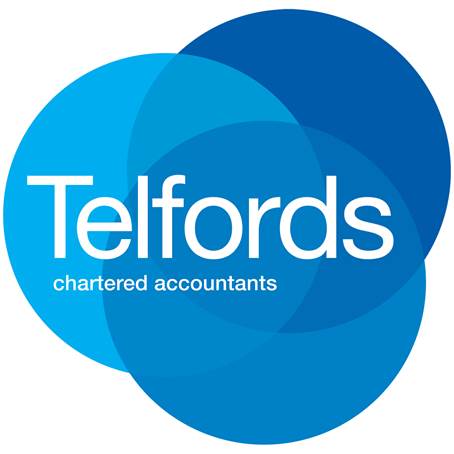When Invoice Financing Fails. A true SME disaster story.
Today, small enterprises can grow fast but what are the risks of financing your booming business?

Put simply, Invoice Financing is when a bank or financial institution loans a business capital on the strength of its outstanding invoices to avoid cash flow problems. It can be the financial injection your SME needs. Or it can destroy your company…
What follows is based on actual events – this really happened to a business. The names have been changed but nothing else.
How it started
Dan and John launched a Data business with most of the work project based for the construction sector.
They’d planned their business set up well with a number of clients and projects already on board. Like many SME business owners, John decided to stay in full time employment until the fledgling company was secure enough to pay him what he needed.
The business grew quickly and was profitable. These were exciting times with Dan and John able to be ‘on the tools’ as well as managing all the other aspects of a growing business: sales, marketing, operations and, of course, finance.
Dan persuaded his wife to do the bookkeeping and she was able to keep on top of the everyday accounts; the receipts, payments and VAT returns.
As the business grew, more data analysts were taken on meaning Dan and John became less involved in the day-to-day work.
A Fast Growing Business
By this stage, business turnover was around £800,000 and a lot of that was profit!
Then came the opportunity to pitch for a term maintenance contract that would triple the business income.
Dan and John were delighted when they won the tender.
And so began the slow, sad demise of their business.
The Next Step: Invoice Financing
Payment terms on the new contract were 60 days from end of month.
This immediately caused a cash flow problem as all of the new subcontractors they’d taken on were paid on 30 day terms.
With no financial expert behind them, Dan and John decided to approached their bank.
The bank took a look at their books and, delighted with how the business was shaping up, recommended invoice financing as the solution.
Everything seemed rosy. Work was invoiced on completion, the bank provided 80% of the invoice value and the subcontractors got paid on time.
Cash balances looked healthy with (what appeared to be) more than was needed to cover monthly costs.
Dan and John increased their dividends. Everyone was happy…
The First Warning signs
However, signs that all was not well started to show when, gradually, turnover from the maintenance contract started to slow. As monthly turnover shrank so did their cash balance in-line with the lower advances coming from the invoice financing facility.
Surplus cash disappeared. And, for the first time, cash flow had to be managed closely.
Then the bad news.
The company’s accounts were completed 8 months after the year end. And they showed it had lost £150,000.
This meant the dividends Dan and John had awarded themselves had to be reclassified as salary (there was simply no profit to pay the dividends they had taken). This meant the company owed far more to the taxman!
From Bad to Worse
The bad news got worse as the year unfolded. Revenue from the contract work began to dry up – even though John and Dan’s overheads remained the same.
Without cash to pay subcontractors at the end of the month, irate suppliers turned up at their offices demanding payment.
Their stress levels went through the roof.
By the end of the financial year, losses were over £300,000.
They were overdrawn at the bank, HMRC was demanding ever higher payments and the directors sank most of their personal savings into the business to keep it afloat.
At this stage they got in touch with Telfords. Sadly, far too late.
So, what were the mistakes these Small Business Owners made due to Invoice Financing?
The tell-tale signs were there:
Firstly, the business had grown rapidly and needed a finance facility to help pay the bills on time. But the additional cash in the bank from invoice finance advances gave the business owners a false sense of security.
Secondly, Dan and John were working ‘on’ the business and not ‘in’ it. They were less involved in the day-to-day work and didn’t have a reporting structure in place to keep them up to date.
Thirdly, the big maintenance contract had not been properly costed and was actually loss making.
And fourthly, the company’s accountant was not close enough to the business to offer help at the right time.
So what would have alerted John and Dan to these issues earlier?
The 5 Simple Steps to avoid the common Finance Invoicing mistakes.
- Involve your accountant as soon as a contract is won.
This contract took John and Dan’s business to a much higher level. As they didn’t have a qualified finance person in-house they needed sound advice. A few hours with their accountant at this stage would have been money well spent.
- Draw up a Business Plan.
For all business, but especially fast growing or rapidly changing ones, a business plan is vital.
- Stay on top of your key numbers with up-to-date management accounts.
The business used a desktop version of Sage. Something like Xero would have kept their accountant closer to the business, so the warning signs could have been spotted earlier.
- Get professional help [and software] with costing your projects
When they started the new maintenance contract there were multiple jobs and numerous locations suddenly in play. A true picture of the immediate and projected costs was needed. Xero Projects, Workflow Max or SimPRO could have helped.
- Understand you cash flow via regular forecasts
Accounting software like Xero in tandem with an app like Float would have given the guys the cashflow forecasts they needed to spot potential problems.
When a business grows quickly, getting the right finance in place is a no-brainer. If you don’t have the cash available then invoice finance (see my article ‘How Invoice Financing Helped Double Turnover’), working capital loans or asset finance can be just what you need.
However, before opting for financing, think about how tightly you manage your business. Do you have accurate accounts prepared, can you keep a close eye on profit and cash flow during this dynamic time. And do you have a finance professional close to the business that you trust?
The Moral of the tale
Whilst this is a tale about invoice finance it’s equally relevant to other forms of finance – business loans, overdrafts, HP agreements and leases.
It’s vital that you take appropriate advice. An accountant is in an ideal position to provide clear, smart and sensible financial advice. And adopting the latest accounting software such as Xero means that advice can be given in ‘real time’ over the phone or online with tools such as Zoom.
Invoice Financing works great for 1000s of small businesses. Could you be one of them?
Find out now…

